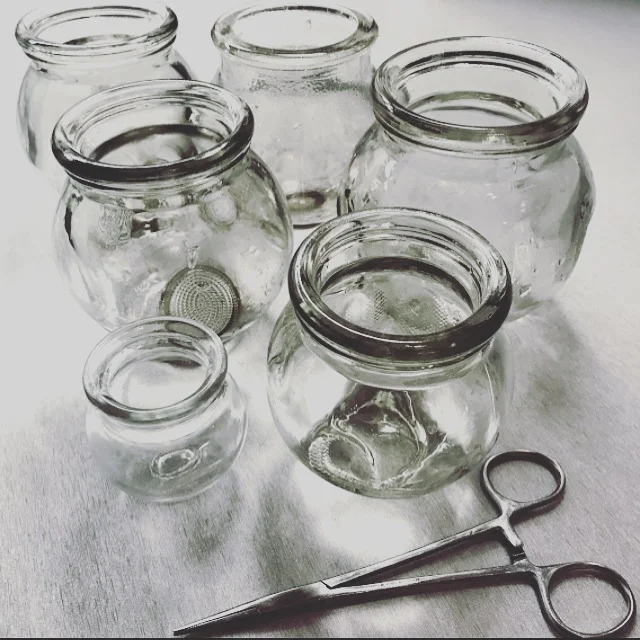Dampness in Traditional Chinese Medicine
In Traditional Chinese Medicine (TCM), an ancient and comprehensive system of healthcare, the concept of dampness holds a significant place. Dampness is considered a pathological factor that can affect the body in numerous ways and can lead to various health issues. In this article, we will dive into the manifestations of dampness in the body, explore signs and symptoms, discuss foods that can help alleviate dampness, and unravel the theory of dampness to welcome in more balance.

Understanding Dampness and Its Impact on Health
In Traditional Chinese Medicine, “Dampness” is one of the most commonly discussed pathogenic factors—and one of the most challenging to resolve. It can originate externally from environmental factors or internally from poor digestion and lifestyle habits.Dampness can also be explained with words like; viscosity, sticky, lingering, and stagnation. When things are “sticky” within the body, they are often difficult to remove, causing stagnation which can impact Qi, Blood, food, or stool. Dampness is considered a Yin pathogen, impairing Yang and obstructing Qi circulation.
Dampness also tends to descend within the body and accumulate in the lower portion of the body ( think knees, ankles), and can easily reside in Yin areas ( think Spleen).
Manifestations of Dampness in the Body
According to TCM principles, dampness is one of the six external pathogenic factors that can invade the body. It is characterized by an excess of moisture or fluid, which disrupts the normal functioning of Organs and Meridians. Dampness can arise from external factors like living in a damp environment or internal factors such as poor digestion, improper diet, overstrain/stress, lack of physical exercise, or traumatic injury.
Dampness is considered the predominant Qi of late summer but can occur in any season. It is mainly characterized by heaviness and turbidity within the body especially in the joints, or can be seen by turbid discharge (such as excess leukorrhea, weeping eczema, suppurative pores, sticky stools, or excess dark urine).
When dampness goes unchecked or gets pathological, dampness gathers and water forms, water accumulates forming rheum, and rheum congeals forming phlegm, which is the most yin of all pathogens and the hardest to treat. This is generated when the body’s water metabolism functions are impaired. Normal fluids stagnate and become pathological fluids. These all share the same source but each has unique characteristics, and once produced they become etiological factors in their own right.

When this condition occurs in the body, it begins to obstruct the Qi mechanism, impairs the correct circulation of Qi and Blood, and can cause a wide range of illnesses and pathological changes. Unfortunately, these illnesses tend to be stubborn and “sticky” and the disease course can be long. If left to linger, this condition can easily disturb the Shen (especially phlegm).
6 External Pathogenic Factors
Dampness
Cold
Wind
Dryness
Heat
Fire
The manifestations of dampness in the body can be diverse and affect various organ systems. Common symptoms include lethargy, heaviness in the limbs, edema, and a feeling of sluggishness. The Spleen and Stomach are particularly vulnerable to dampness, as they play a crucial role in transforming and transporting fluids. When dampness accumulates, it obstructs the smooth flow of Qi (energy) and blood, leading to a range of health issues.
Tongue and Pulse diagnosis are two major tools used by practitioners to confirm the presence of dampness in the body, this can be seen as a pale and swollen tongue with teeth marks on the edges, indicative of dampness affecting the Spleen. A thick, sticky, greasy tongue coating may also be present. The pulse associated with dampness is often soggy or slippery. This indicates an imbalance in the flow of Qi and the presence of excess moisture.
Signs and Symptoms of Dampness
Identifying dampness requires a keen understanding of the signs and symptoms associated with this pathological factor. TCM practitioners look for both physical and emotional indicators to make an accurate diagnosis. Some common signs of dampness include:
Heaviness and Swelling- As Dampness accumulates it may cause a feeling of heaviness, or even a physical swelling in the limbs and swelling, especially in the ankles and knees.
Digestive Issues- Poor digestion, bloating, and a feeling of fullness are common signs of dampness affecting the Spleen and Stomach.
Fatigue- Dampness can lead to a sense of lethargy and fatigue. This can manifest as either physical or mental fatigue or both.
Phlegm and Mucus- Excessive dampness can manifest as phlegm and mucus in the respiratory system, leading to conditions like coughing and nasal congestion.
Joint Pain- Dampness tends to accumulate in the joints, causing pain and stiffness, akin to conditions like arthritis.
Foods to Help Alleviate Dampness
In TCM, diet plays a crucial role in maintaining balance and preventing the accumulation of dampness. Certain foods are believed to help eliminate dampness and restore harmony to the body. If you have signs of dampness, consider incorporating the following into your diet:
Roasted Root Vegetables- Carrots, sweet potatoes, and radishes help strengthen the Spleen and promote the transformation of dampness.
Steamed Leafy Greens- Dark, leafy greens like kale and spinach support the body's natural detoxification process, helping to eliminate dampness.
Pungent Foods- Garlic, ginger, and onions have warming properties that help dispel dampness and improve circulation.
Whole Grains- Brown rice, quinoa, pearl barley, and oats are easier to digest and support the Spleen in transforming dampness.
Herbal Teas- Cardamon, Ginger, Fennel, Chrysanthemum tea, and Lotus leaf tea are known for their ability to clear dampness and promote fluid balance.
Understanding dampness in TCM goes beyond recognizing physical symptoms; it involves a holistic approach that considers the interconnectedness of the body, mind, and environment. By recognizing the manifestations of dampness, identifying its signs and symptoms, and incorporating dampness-clearing foods into your diet, you can work towards restoring balance and promoting better digestive health.
Poor digestion got you down?
This weekly meal planner is focused on helping support your digestive system and boost your Spleen Qi.
7 days of meals, recipes and tips!
It comes designed in a PDF format for easy printing- so you can pop it on the fridge for inspiration, or take it to the market with you while you shop.
It comes stocked with:
🗓️ Easy-to-follow weekly meal planner with tasty suggestions for breakfast, lunch, dinner, and snacks each day of the week.
✔️ Grocery checklist
🌿 Helpful tips to help keep your tummy happy.
😋 Yummy recipes
This guide will get you off to the right start!
Check out the new Vegetarian Weekly Planner for another week of delicious recipes ( very easy to add some baked chicken or roasted salmon etc. to any of those recipes too!
🚨UPDATED WITH EVEN MORE DELICIOUS RECIPES!🚨
Prepare to embark on a transformative journey towards enhancing your fertility naturally with the nutritional outlook of Chinese Medicine. This book is the key to nurturing your body, and balancing your hormones.
🍲 Nutrient-rich recipes to nourish your body
🌱 Traditional Chinese Medicine wisdom for hormonal balance
💫 Tips to support your fertility journey
📖 Expert insights on holistic well-being
⭕️ Seed Cycling and more!
Incorporating herbal medicine into your routine doesn’t need to be complicated.
Start small.
Make a cup of tea. Stir herbs into your soup. Tune in to how you feel.
The beauty of herbal wellness lies in its simplicity and its ability to bring you back into relationship with nature, moment by moment.
Welcome to ✨ HERBAL PANTRY for EVERYDAY WELLNESS✨
This guide introduces the TOP 10 Herbs every budding herbalist needs in their pantry to help elevate your health!
Created by licensed acupuncturist and herbalist Lenore Cangeloso, this beautifully crafted ebook blends Traditional Chinese Medicine wisdom with modern, approachable recipes.
From calming teas to immune-boosting broths and beauty elixirs, you’ll learn how to bring the healing power of herbs into your daily life with ease and intention.
✨ Start your herbal journey today—naturally, simply, and rooted in tradition. ✨
Your Daily Dose of Herbal Concoctions
DRINK ME is your go-to guide for crafting nourishing, restorative, and delicious elixirs right from your kitchen.
🔥 Inside, You'll Discover:
✅ Easy-to-follow recipes for energy, immunity, digestion & relaxation
✅ The healing properties of herbs & how to combine them effectively
✅ Tips to make herbal infusions, decoctions, and tonics like a pro
💚 Whether you're a herbal enthusiast or just getting started, this ebook will help you create powerful, plant-based remedies to support your mind, body, and spirit.
📥 Grab your copy today and start sipping your way to wellness! 🥄🌸
👉 Download Now
Boost Your Spleen Qi with Ease!
This weekly meal planner is your ultimate guide to nourishing your body and supporting your Spleen Qi with wholesome, vegetarian meals.
✨ What’s Included:
A Full Week of Meals: Holistic recipes for breakfast, lunch, dinner, and a daily snack.
Easy-to-Use PDF Format: Perfect for printing to place on your fridge or take to the market.
Helpful Tips and Inspiration: Stay motivated with handy hints and guidance.
Delicious Recipes: Enjoy a variety of meals that are both nourishing and satisfying.
Transform your meals into tools for better health and vitality—all while keeping it simple and vegetarian-friendly. 🌱
Skin Deep Beauty- Get Glowing, Radiant Skin with Traditional Chinese Medicine
A step-by-step guide to level up your skincare.
—
⭐️ Packed with information to make natural and informed choices
⭐️ Guides to guasha and other amazing techniques
⭐️ Yummy recipes to get glowing from the inside out
⭐️Easy fun recipes for natural skin care
⭐️Afirmmations and more!
This easy-read handbook is a complete guide to dealing with “Liver Qi Stagnation”. It explains what Liver Qi stagnation is and offers various ways to help…
🍵Simple Dietary Advice
☺️Easy Lifestyle Changes
💜Nourishing Self-Care Routines
🏃♀️Gentle exercises
and
📖Delicious Recipes
A nutritional guide that leads you into the importance of the Five Flavors, from the lens of traditional Chinese Medicine. This book also offers a few great recipes to help incorporate this theory into your life and kitchen!
This guide offers:
🌿In-depth explanation of the Five Favors from a TCM perspective and how they impact physiology and digestion.
❣️ Basics of TCM theory and nutritional outlook
😋 Yummy recipes for each flavor profile
🍂 Seasonal Eating Tips
🧘 Mindfulness Prompts
Hardcopy available via Amazon.
By recognizing the manifestations of dampness, identifying its signs and symptoms, and incorporating dampness-clearing foods into your diet, you can work towards restoring balance and promoting overall well-being. This sticle will explain signs and symptoms of Dampness, and offer a few solutions.
Product Review of Dose for your Liver, a tasty herbal elixir.
Spleen Qi Deficiency is a very common imbalance in Chinese Medicine. This article explains what that means, and what to do about it. It offers lifestyle suggestions as well as food choices, while giving an extensive overview of the theory attached from TCM.
The Stomach Bug can be quick and dirty. Here are some natural options to help soothe.
The Elimination diet is the “gold standard” when it comes to figuring out food sensitivities. This 3-5 week protocol can help you make individualized health choices to optimize your digestive function.
Looking for ways to incorporate herbs into your daily life? This article gives some of the most common, and delicious, food grade herbs to help improve your health and your cooking!
Cupping therapy is an amazing and feel-good modality that can help a wide variety of aliments. Read on to learn more.
Explore ways to make your bath more ritualistic and healing through herbs, salts, and scents.
In this article, we will explore how natural medicine techniques, herbs, and Chinese medicine can be incredibly useful for children's health.
Seed Cycling is an easy and effective way help regulate your hormones and support a healthy menstrual cycle through diet and nutrition. Using the natural wisdom and innate properties of specific seeds and nutritional oils, we find more balance with in the menstrual cycle and hormones. This article is a guide to get started with helpful tips as well as a brief Chinese medicine outlook too!
This article explains the benefits of the medicinal herb, Ginger.
Castor oil has many therapeutic properties and the application of castor oil packs is most often how this oil is applied. This article explains its benefits and how to create and use a castor pack.
This article gives a recipe for an amazing hair growth and scalp oil that utilizes the benefits of the Chinese Herb, He shou wu, as well as other oils that are beneficial for hair and scalp health.
Chinese Dietary therapy is a unique way at looking at food choice and how they interact with our bodies. This article give an in-depth explanation and hopefully makes it easy to incorporate into your life.
Ginseng is a powerful and popular herbal remedy. This article explains the various types and uses.
Gluten free has come a long way in the past decade and is making so many positive changes in peoples health. This is a simple guide to help make the transition to a gluten free diet easier and more accessible!
This article with discuss uses and benefits of herbal pelvic steaming, as well as contraindications and a few simple tips to get started. I will also list a bunch of resources for you to look into so you can dive deeper into this amazing modality.
This natural and gentle technique is a great way to boost the immune system and fight fevers, colds and headaches!
In the quest for flawless, radiant skin, many are turning to innovative methods that go beyond traditional skincare routines. But what exactly is Red Light Therapy, and how does it intersect with the principles of Traditional Chinese Medicine to enhance skin health?
We all know sleep is essential. But how do we determine why we may not be sleeping well and what to do about it? Read on to learn more.
In this article, we will explore various types of magnesium, their uses, benefits, and potential contraindications.
Learn more about various types of headaches and natural solutions to help.
Reishi mushroom is an adaptogenic herb that has a wide range of medicinal uses and has been used for thousands of years, while also being one of the most researched herbs today. This article looks at this mushroom, from a pharmacological and Chinese medicine focus.
The nature of food and herbs describes the temperature changes that they cause within the body. TCM nutrition principles revolve around the energetic nature of foods, viewing them not just as sources of sustenance but as carriers of specific energies that can influence the body's internal balance. Read on to learn more.
A guide to overcoming constipation through natural remedies. This article explores effective and gentle solutions derived from nature to address constipation issues. From fiber-rich foods to herbal remedies and lifestyle adjustments, discover practical tips for promoting digestive health and achieving regular bowel movements without relying on synthetic interventions.
Turmeric is such an amazing plant! It gives curry its golden color as well as excels in the medicinal realm. Read on to learn about its benefits as well as some great recipes to help incorporate it into your life!
Quick and Easy Guide to Dry Brushing—along with health benefits, how-to, and options for brushes.
This article explains natural ways to help prevent flare up of conditions such as atopic and perioral dermatitis.
This article goes over simple and safe DIY recipes for home cleaning products, from laundry detergents to multi-purpose cleaners and safe bleach alternatives. Read on to learn ways to keep your home sparkling safe!
Read on to learn about the healing capacity of herbs that fall into the category of “adaptogens”. This article will explain benefits from a western and TCM perspective.
Lenore Cangeloso is a Board Certified Acupuncturist, Clinical Herbalist and avid writer based in Southeast Portland.






































🌿 Love What You See? Want It All? This bundle was made for you! 🌿
Get the ultimate herbal wellness collection in one beautifully curated package. This bundle includes:
✨ Essential Tastes Cookbook – Explore the Five Flavors of TCM through immune-boosting, nourishing recipes.
🥗 Spleen Qi Meal Planners – Two full weeks of meal plans (vegetarian and non-vegetarian) to support digestion and energy.
🫙 Herbal Pantry for Everyday Wellness – Learn the top 10 must-have herbs and exactly how to use them at home.
Whether you’re just starting your herbal journey or deepening your practice, this bundle gives you the tools to nourish your body, mind, and spirit—season by season, meal by meal.
✨ Save big and empower your kitchen with centuries of wisdom—naturally. ✨
$70 value for only $45!